How to Dissolve Bone Spurs Naturally
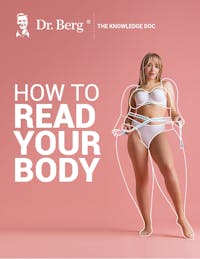
How to Read Your Body
Learn to recognize common symptoms and uncover their underlying health issues
Understand the signs of nutrient deficiencies to manage your health
Explore the four metabolic body types and the core factors that influence them
Interpret your body's signals from head to toe to identify potential health concerns

How to Read Your Body
Learn to recognize common symptoms and uncover their underlying health issues
Understand the signs of nutrient deficiencies to manage your health
Explore the four metabolic body types and the core factors that influence them
Interpret your body's signals from head to toe to identify potential health concerns

How to Read Your Body
Learn to recognize common symptoms and uncover their underlying health issues
Understand the signs of nutrient deficiencies to manage your health
Explore the four metabolic body types and the core factors that influence them
Interpret your body's signals from head to toe to identify potential health concerns

How to Read Your Body
Learn to recognize common symptoms and uncover their underlying health issues
Understand the signs of nutrient deficiencies to manage your health
Explore the four metabolic body types and the core factors that influence them
Interpret your body's signals from head to toe to identify potential health concerns

How to Read Your Body
Learn to recognize common symptoms and uncover their underlying health issues
Understand the signs of nutrient deficiencies to manage your health
Explore the four metabolic body types and the core factors that influence them
Interpret your body's signals from head to toe to identify potential health concerns

How to Read Your Body
Learn to recognize common symptoms and uncover their underlying health issues
Understand the signs of nutrient deficiencies to manage your health
Explore the four metabolic body types and the core factors that influence them
Interpret your body's signals from head to toe to identify potential health concerns

How to Read Your Body
Learn to recognize common symptoms and uncover their underlying health issues
Understand the signs of nutrient deficiencies to manage your health
Explore the four metabolic body types and the core factors that influence them
Interpret your body's signals from head to toe to identify potential health concerns

How to Read Your Body
Learn to recognize common symptoms and uncover their underlying health issues
Understand the signs of nutrient deficiencies to manage your health
Explore the four metabolic body types and the core factors that influence them
Interpret your body's signals from head to toe to identify potential health concerns

How to Read Your Body
Learn to recognize common symptoms and uncover their underlying health issues
Understand the signs of nutrient deficiencies to manage your health
Explore the four metabolic body types and the core factors that influence them
Interpret your body's signals from head to toe to identify potential health concerns

How to Read Your Body
Learn to recognize common symptoms and uncover their underlying health issues
Understand the signs of nutrient deficiencies to manage your health
Explore the four metabolic body types and the core factors that influence them
Interpret your body's signals from head to toe to identify potential health concerns

How to Read Your Body
Learn to recognize common symptoms and uncover their underlying health issues
Understand the signs of nutrient deficiencies to manage your health
Explore the four metabolic body types and the core factors that influence them
Interpret your body's signals from head to toe to identify potential health concerns

How to Read Your Body
Learn to recognize common symptoms and uncover their underlying health issues
Understand the signs of nutrient deficiencies to manage your health
Explore the four metabolic body types and the core factors that influence them
Interpret your body's signals from head to toe to identify potential health concerns

How to Read Your Body
Learn to recognize common symptoms and uncover their underlying health issues
Understand the signs of nutrient deficiencies to manage your health
Explore the four metabolic body types and the core factors that influence them
Interpret your body's signals from head to toe to identify potential health concerns

How to Read Your Body
Learn to recognize common symptoms and uncover their underlying health issues
Understand the signs of nutrient deficiencies to manage your health
Explore the four metabolic body types and the core factors that influence them
Interpret your body's signals from head to toe to identify potential health concerns

How to Read Your Body
Learn to recognize common symptoms and uncover their underlying health issues
Understand the signs of nutrient deficiencies to manage your health
Explore the four metabolic body types and the core factors that influence them
Interpret your body's signals from head to toe to identify potential health concerns

How to Read Your Body
Learn to recognize common symptoms and uncover their underlying health issues
Understand the signs of nutrient deficiencies to manage your health
Explore the four metabolic body types and the core factors that influence them
Interpret your body's signals from head to toe to identify potential health concerns

How to Read Your Body
Learn to recognize common symptoms and uncover their underlying health issues
Understand the signs of nutrient deficiencies to manage your health
Explore the four metabolic body types and the core factors that influence them
Interpret your body's signals from head to toe to identify potential health concerns

How to Read Your Body
Learn to recognize common symptoms and uncover their underlying health issues
Understand the signs of nutrient deficiencies to manage your health
Explore the four metabolic body types and the core factors that influence them
Interpret your body's signals from head to toe to identify potential health concerns

How to Read Your Body
Learn to recognize common symptoms and uncover their underlying health issues
Understand the signs of nutrient deficiencies to manage your health
Explore the four metabolic body types and the core factors that influence them
Interpret your body's signals from head to toe to identify potential health concerns

How to Read Your Body
Learn to recognize common symptoms and uncover their underlying health issues
Understand the signs of nutrient deficiencies to manage your health
Explore the four metabolic body types and the core factors that influence them
Interpret your body's signals from head to toe to identify potential health concerns

How to Read Your Body
Learn to recognize common symptoms and uncover their underlying health issues
Understand the signs of nutrient deficiencies to manage your health
Explore the four metabolic body types and the core factors that influence them
Interpret your body's signals from head to toe to identify potential health concerns

How Does Intermittent Fasting Work?
Understand the science behind intermittent fasting and its health benefits
Learn how fasting impacts metabolism, insulin sensitivity, and hormonal balance
Discover the four stages of intermittent fasting
Get practical tips for integrating fasting into your daily routine

How Does Intermittent Fasting Work?
Understand the science behind intermittent fasting and its health benefits
Learn how fasting impacts metabolism, insulin sensitivity, and hormonal balance
Discover the four stages of intermittent fasting
Get practical tips for integrating fasting into your daily routine

How Does Intermittent Fasting Work?
Understand the science behind intermittent fasting and its health benefits
Learn how fasting impacts metabolism, insulin sensitivity, and hormonal balance
Discover the four stages of intermittent fasting
Get practical tips for integrating fasting into your daily routine

How Does Intermittent Fasting Work?
Understand the science behind intermittent fasting and its health benefits
Learn how fasting impacts metabolism, insulin sensitivity, and hormonal balance
Discover the four stages of intermittent fasting
Get practical tips for integrating fasting into your daily routine

How Does Intermittent Fasting Work?
Understand the science behind intermittent fasting and its health benefits
Learn how fasting impacts metabolism, insulin sensitivity, and hormonal balance
Discover the four stages of intermittent fasting
Get practical tips for integrating fasting into your daily routine

How Does Intermittent Fasting Work?
Understand the science behind intermittent fasting and its health benefits
Learn how fasting impacts metabolism, insulin sensitivity, and hormonal balance
Discover the four stages of intermittent fasting
Get practical tips for integrating fasting into your daily routine

How Does Intermittent Fasting Work?
Understand the science behind intermittent fasting and its health benefits
Learn how fasting impacts metabolism, insulin sensitivity, and hormonal balance
Discover the four stages of intermittent fasting
Get practical tips for integrating fasting into your daily routine

How Does Intermittent Fasting Work?
Understand the science behind intermittent fasting and its health benefits
Learn how fasting impacts metabolism, insulin sensitivity, and hormonal balance
Discover the four stages of intermittent fasting
Get practical tips for integrating fasting into your daily routine

How Does Intermittent Fasting Work?
Understand the science behind intermittent fasting and its health benefits
Learn how fasting impacts metabolism, insulin sensitivity, and hormonal balance
Discover the four stages of intermittent fasting
Get practical tips for integrating fasting into your daily routine

How Does Intermittent Fasting Work?
Understand the science behind intermittent fasting and its health benefits
Learn how fasting impacts metabolism, insulin sensitivity, and hormonal balance
Discover the four stages of intermittent fasting
Get practical tips for integrating fasting into your daily routine

How Does Intermittent Fasting Work?
Understand the science behind intermittent fasting and its health benefits
Learn how fasting impacts metabolism, insulin sensitivity, and hormonal balance
Discover the four stages of intermittent fasting
Get practical tips for integrating fasting into your daily routine

How Does Intermittent Fasting Work?
Understand the science behind intermittent fasting and its health benefits
Learn how fasting impacts metabolism, insulin sensitivity, and hormonal balance
Discover the four stages of intermittent fasting
Get practical tips for integrating fasting into your daily routine

How Does Intermittent Fasting Work?
Understand the science behind intermittent fasting and its health benefits
Learn how fasting impacts metabolism, insulin sensitivity, and hormonal balance
Discover the four stages of intermittent fasting
Get practical tips for integrating fasting into your daily routine

How Does Intermittent Fasting Work?
Understand the science behind intermittent fasting and its health benefits
Learn how fasting impacts metabolism, insulin sensitivity, and hormonal balance
Discover the four stages of intermittent fasting
Get practical tips for integrating fasting into your daily routine

How Does Intermittent Fasting Work?
Understand the science behind intermittent fasting and its health benefits
Learn how fasting impacts metabolism, insulin sensitivity, and hormonal balance
Discover the four stages of intermittent fasting
Get practical tips for integrating fasting into your daily routine

How Does Intermittent Fasting Work?
Understand the science behind intermittent fasting and its health benefits
Learn how fasting impacts metabolism, insulin sensitivity, and hormonal balance
Discover the four stages of intermittent fasting
Get practical tips for integrating fasting into your daily routine

How Does Intermittent Fasting Work?
Understand the science behind intermittent fasting and its health benefits
Learn how fasting impacts metabolism, insulin sensitivity, and hormonal balance
Discover the four stages of intermittent fasting
Get practical tips for integrating fasting into your daily routine

How Does Intermittent Fasting Work?
Understand the science behind intermittent fasting and its health benefits
Learn how fasting impacts metabolism, insulin sensitivity, and hormonal balance
Discover the four stages of intermittent fasting
Get practical tips for integrating fasting into your daily routine

How Does Intermittent Fasting Work?
Understand the science behind intermittent fasting and its health benefits
Learn how fasting impacts metabolism, insulin sensitivity, and hormonal balance
Discover the four stages of intermittent fasting
Get practical tips for integrating fasting into your daily routine

How Does Intermittent Fasting Work?
Understand the science behind intermittent fasting and its health benefits
Learn how fasting impacts metabolism, insulin sensitivity, and hormonal balance
Discover the four stages of intermittent fasting
Get practical tips for integrating fasting into your daily routine

How Does Intermittent Fasting Work?
Understand the science behind intermittent fasting and its health benefits
Learn how fasting impacts metabolism, insulin sensitivity, and hormonal balance
Discover the four stages of intermittent fasting
Get practical tips for integrating fasting into your daily routine
Bone spurs are a common and sometimes painful skeletal condition. However, finding relief doesn't always require invasive medical intervention.
Learning how to dissolve bone spurs naturally offers an alternative for those wishing to avoid surgical removal.
Let's take a closer look at natural remedies and lifestyle adjustments that can help manage and prevent bone spurs.
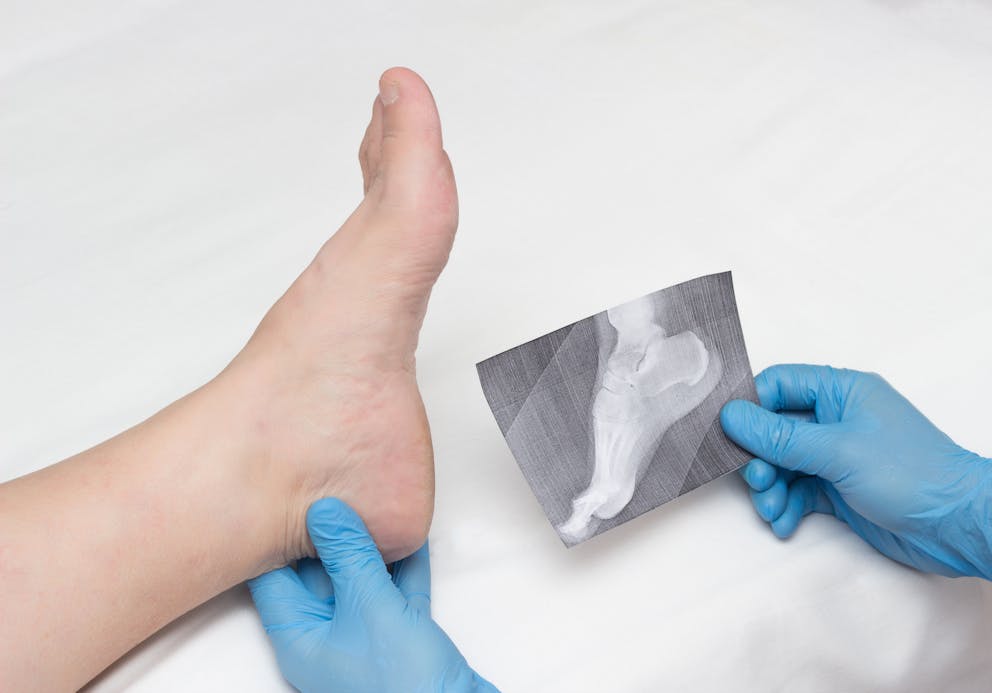
What are bone spurs?
Bone spurs refer to atypical bone formations that can occur in various parts of the body, most commonly the joints.
There are two primary manifestations of bone spurs. Osteophytes develop on the edges of bones, and enthesophytes form where tendons or ligaments attach to the bone.
Despite their name, bone spurs usually develop as smooth, gradually enlarging protrusions, although it's possible for bone spurs to be sharp and ragged.
While bone spurs are often painless, they can lead to significant bone pain when they impinge on surrounding tissues or create pressure points.
Bone spur growth can occur on any bone. However, most often, they’re found on weight-bearing joints such as the spine, knees, hips, shoulders, and feet.
Watch the video below to learn six reasons why calcium deposits and bone spurs occur.
6 Reasons for Calcium Deposits
Symptoms of bone spurs
Bone spurs are notorious for their silent progression, often remaining asymptomatic, and thus undetectable over prolonged periods.
Once symptoms emerge, they can vary greatly depending on the location of the bone spur within the body.
Here are three of the most common sites for bone spurs and their associated symptoms.
1. Heel spurs
Heel spurs often occur as a response to plantar fasciitis or chronic inflammation of the plantar fascia ligament.
Common symptoms of heel spurs include:
Acute pain or discomfort in the heel
Sensitivity or swelling around the sole of the foot
Pain that worsens when walking, running, or standing for long periods
2. Spine spurs
Spine spurs, often linked to poor posture or excess weight, can form along the spine. These spurs can potentially lead to spinal stenosis, a compression of the nerves along the spine that can create significant discomfort.
Symptoms associated with spine spurs include:
Pain in the neck or lower back that can extend to the arms and legs
Numbness, tingling, or weakness of the affected area and extremities
Stiffness and reduced range of motion, coordination, and balance
3. Knee spurs
The knee, a vital weight-bearing joint, is particularly susceptible to degenerative changes that can result in bone spurs.
Common symptoms include:
Pain during leg extension or contraction
Joint pain that worsens with activity
Swelling and tenderness in the knee area
A sensation of the knee catching or locking up during certain movements
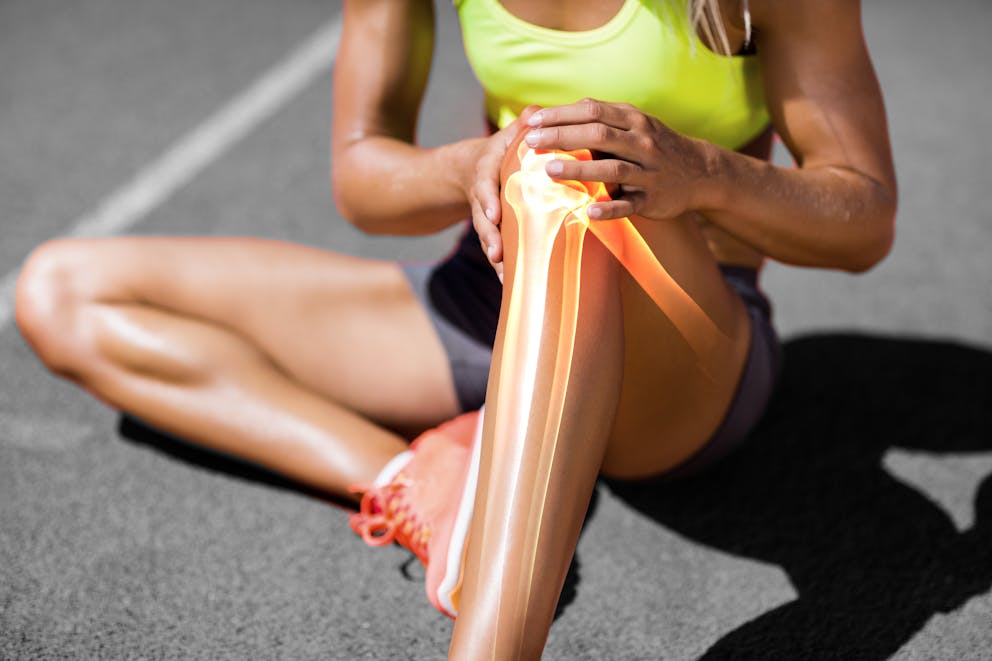
What causes bone spurs?
Bone spurs develop as the body attempts to naturally adapt to constant pressure, stress, or inflammation affecting joints or the spine.
They represent the body's effort to repair itself or enhance stability in an area where cartilage has deteriorated or abnormal stress has been sustained, whether due to sudden injury or prolonged trauma.
Risk factors for bone spurs
Bone spurs result from the body's attempt to repair itself in response to underlying health conditions or lifestyle factors.
Recognizing these risk factors is crucial for identifying potential preventive measures and addressing the root causes of bone spur formation.
Here are some of the leading causes and risk factors associated with the development of bone spurs.
Aging
The cumulative effects of wear and tear on the bones and joints, along with elevated inflammation and other factors, can increase the likelihood of developing bone spurs as we age.
Obesity
One of the most common causes of degenerative changes in the lower back and hips is obesity.
Carrying excess weight puts constant stress on the joints, which wears away cartilage and disrupts the fascia, a layer of connective tissue surrounding bones and joints.
In a natural attempt to stabilize the affected joints, the body can respond by depositing calcium or growing bone spurs to provide structural support.
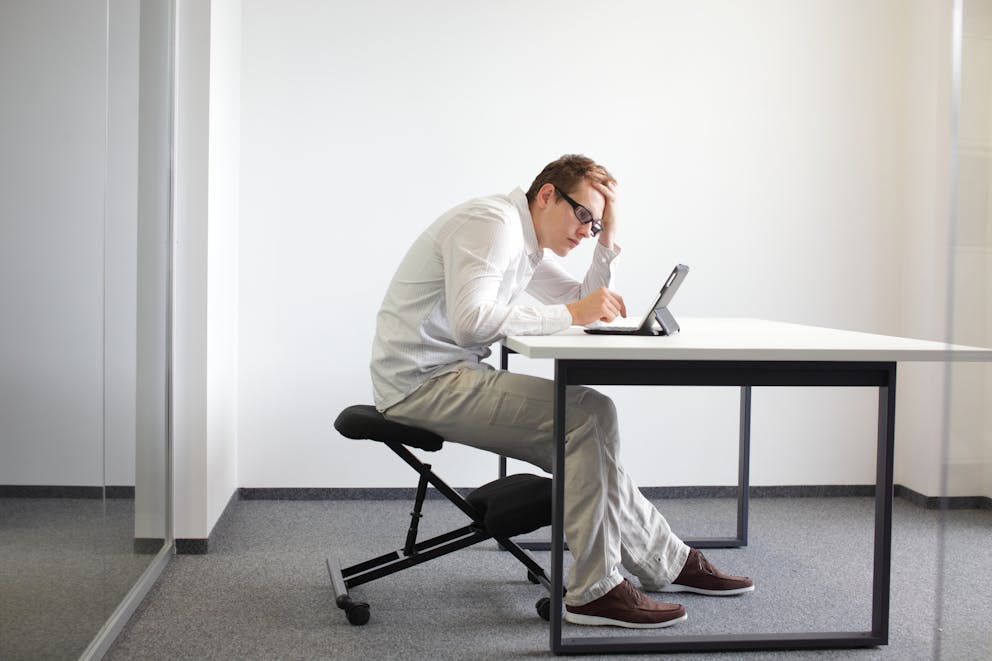
Lack of physical activity
A sedentary lifestyle can weaken joints and reduce cartilage health due to poor circulation and constricted blood vessels.
This inadequate blood flow can impede the delivery of essential nutrients and oxygen to bones and joints, potentially impacting the natural healing process and making them more susceptible to bone spurs.
Conversely, repetitive stress, particularly from high-impact physical activity or improper technique, can overload the joints, promoting spur growth.
Poor posture
Improper posture is one of the leading causes of neck joint degeneration.
Poor posture, especially forward head slouching, increases stress on cervical vertebrae joints, which can lead to potentially painful bone spurs that can affect nerves in the spine.
Injury
Injuries to joints, bones, or surrounding tissues can increase the risk of bone spur formation as part of the healing process.

How to dissolve bone spurs naturally
While it's not guaranteed to dissolve them completely, chiropractors have been able to treat bone spurs and encourage bone remodeling in places such as the spine by correcting weight distribution and applying realignment therapy.
This method follows a principle known as Wolff's Law, which, in summary, states that bone tissue in healthy organisms exhibits adaptive capabilities and dynamically responds to stress.
Increased loading on any given bone triggers a remodeling response to compensate for the increased stress, thereby altering its structure and strength.
The best thing you can do to prevent and potentially get rid of bone spurs is to relieve the source of stress.
If you are overweight, reducing this load on the body will significantly help alleviate weight-related stress on your joints and bones, allowing them to function better and begin the healing process.
In addition, maintaining a proper posture is essential to mediating bone spurs.
A study published in the Journal of Anatomy underscored the importance of maintaining proper posture for bone health.
The researchers observed that lifestyle factors that promote improper posture, such as prolonged use of mobile devices or computers, can lead to biomechanical stresses, particularly in the neck and upper back.
These stresses were linked to the development of enlarged external occipital protuberance (EEOP) or occipital spurs in young adults.
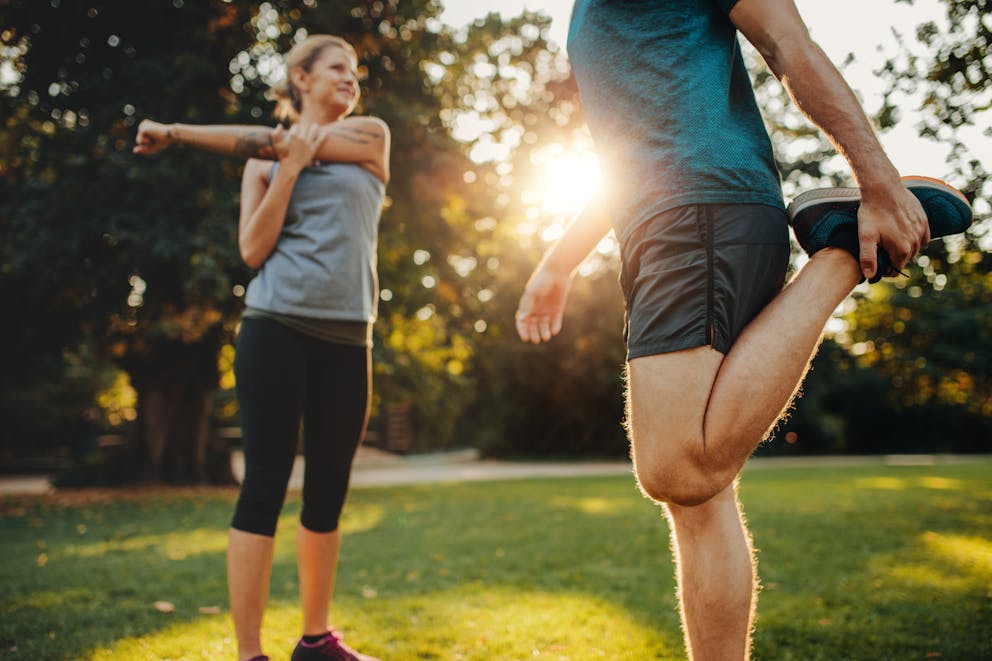
Bone spur prevention
Acknowledging potential risk factors and adopting preventive lifestyle changes can help relieve pain and potentially avoid the progression of bone spurs.
Here are five steps you can take to prevent bone spurs and promote bone health.
1. Early detection
Early detection is one of the best ways to help prevent bone spurs from progressing into more serious conditions.
Fortunately, rapid technological advancements are making it easier to identify these conditions in a timely manner.
A study published by the Journal of Orthopedic Research demonstrated that imaging assessments in combination with deep learning models could significantly enhance the detection of osteophytes in the knee.
This method analyzed not just the bone but also the surrounding soft tissues, offering a more nuanced and detailed evaluation crucial for detecting early-stage osteophytes.
2. Exercise and stretching
Physical activities, particularly low-impact ones such as walking or swimming, enhance blood circulation to the bones. This is vital to supply essential nutrients and oxygen without adding excessive stress, which is critical for bone health and repair.
Regenerative processes such as physical therapy and massages can also be great ways to help improve blood flow, especially in previously injured areas.
Additionally, evidence published in Frontiers in Endocrinology emphasized that physical activity plays an important role in stabilizing the bone remodeling process by optimizing bone formation and resorption.
Exercise fosters stronger and healthier bones and helps maintain the balance between bone creation and breakdown, thereby playing a preventive role against conditions such as bone spurs.

3. Eat nutrient-dense whole foods
Maintaining adequate levels of vitamins and minerals can support bone health and may aid in preventing bone spur symptoms.
Vitamins D and K are crucial for calcium absorption and the regulation of bone growth.
Essential minerals such as magnesium help convert vitamin D into its active form, facilitating proper calcium utilization in the body.
Magnesium also plays a significant role in the body's production of collagen, an essential protein that provides structural integrity and strength to bones.
Avoiding processed foods and focusing on nutrient-dense whole foods, including green leafy vegetables, grass-fed beef, fish, seeds, nuts, and organic full-fat dairy, is an excellent strategy to maintain an adequate intake of bone-health-promoting nutrients.
4. Avoid refined carbohydrates and sugar
Reducing your intake of inflammatory foods such as processed and fried foods, refined carbohydrates, and sugar is crucial to alleviate inflammation associated with bone spurs.
Instead, try a nutritious low-carb diet such as Healthy Keto® that focuses on non-GMO produce, healthy fats, organic full-fat dairy, pasture-raised eggs, and grass-fed meats. This dietary pattern helps reduce inflammation and supports your body's innate healing ability.
Additionally, several natural remedies, such as turmeric, ginger, lemon, and boswellia, can be utilized for their potent anti-inflammatory effects.
5. Support the body’s pH balance
“Maintaining the correct pH balance is essential in mitigating calcium deposits within the body,” explains Dr. Berg. “Factors such as chronic stress or high sugar intake can induce alkalosis, which makes the body overly alkaline and prone to calcium build-up in tissues.”
Incorporating raw, unfiltered apple cider vinegar or betaine hydrochloride (HCl) supplementation can help maintain the body's pH balance.
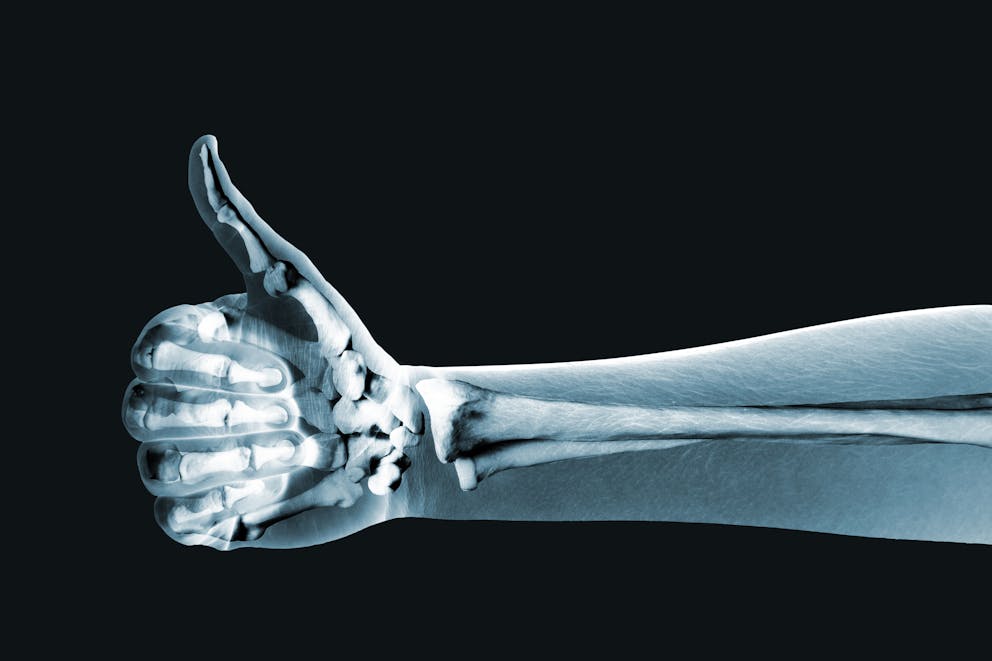
Key takeaways
Bone spurs are bony projections that develop outside of bones in response to prolonged stress or injury to bone or joint tissue.
Understanding bone spurs and why they occur is essential to learning how to dissolve bone spurs naturally. Reducing stress on the skeletal system by maintaining a healthy weight and proper posture is an excellent strategy to help manage and prevent bone spurs without invasive surgery.
FAQ
1. Can you dissolve bone spurs naturally?
In some instances, it’s possible to naturally mitigate bone spur symptoms and influence the bone remodeling process by maintaining a healthy weight, correcting posture, and ensuring a nutritious diet.
However, completely dissolving bone spurs naturally is not guaranteed. Consulting with a healthcare provider before beginning any new treatment is crucial to minimize the risk of adverse health effects.
2. How do you break up a bone spur?
Non-surgical treatments such as realignment therapy may be able to encourage the resorption of certain bone spurs over a period of time. However, immediate bone spur removal isn’t possible without surgical intervention.
3. What nutrients help with bone spurs?
Maintaining adequate vitamin D, vitamin K, calcium, and magnesium levels is crucial for bone health.
These nutrients support bone density and joint function, which may help reduce the risk of complications associated with bone spurs.
4. Can magnesium help get rid of bone spurs?
Magnesium is essential for bone health but doesn't eliminate bone spurs. It supports bone health by aiding calcium utilization and collagen production, potentially mitigating the progression or symptoms of bone spurs.
5. How do I know if I have a bone spur?
Bone spurs are often asymptomatic and are usually detected through imaging tests such as X-rays.
Common symptoms associated with bone spurs include pain, swelling, numbness, tingling, or mobility issues, depending on the spur's location.
6. What causes a bone spur?
Bone spurs are typically caused by the body's natural response to stress on bones and joints, usually linked to factors such as obesity, poor posture, injury, or aging.
Sources
Previous blog
Is Sour Cream Keto-Friendly?Tags

Popular
08/21/2024
55.7K views
02/23/2025
46.8K views
11/18/2024
281K views
03/18/2024
11/21/2022




